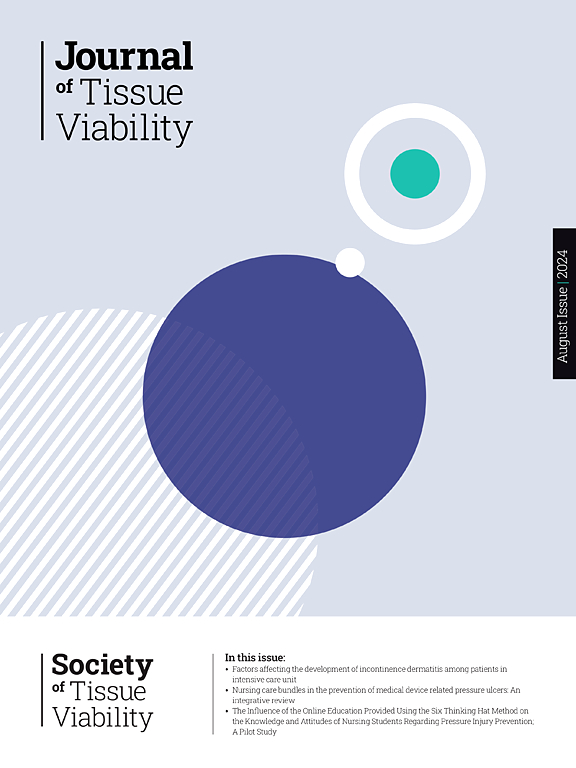为在家自行护理的长期神经病患者(LTNCs)预防褥疮。
IF 2.4
3区 医学
Q2 DERMATOLOGY
引用次数: 0
摘要
制定 "变革理论"(ToC)路径,以便与自我管理护理和居家生活的长期神经病患者(LTNC)、其非正式护理人员和助理人员合作,制定支持压疮(PU)风险识别和管理的多成分干预方案。在 4 个相互关联的工作包(WP)中,采用了参与式方法,并广泛听取了生活在研究重点人群中的意见:共有 74 名参与者参与了 4 个工作包,其中包括 31 名服务使用者 (SU)、8 名照顾者、9 名私人助理 (PA) 和 26 名专业相关人员。我们确定了 8 个关键主题,涉及预防 PU、融入、学习、安全常规、第三部门和同伴支持、驾驭复杂系统、适应和应对变化、风险认知、风险协商和支持角色。研究结果表明,系统性和专业性障碍阻碍了人们自我护理和寻求帮助的能力。这项研究强调了在家中为长期慢性阻塞性肺病患者开展预防性肺部感染活动的复杂性和影响,以及卫生专业人员和系统需要学习的领域。通过了解这些复杂性,我们绘制了系统地图,确定了资源需求,并说明了变革理论(ToC)路径,为今后开发和用户测试互动式多成分干预措施奠定了基础。本文章由计算机程序翻译,如有差异,请以英文原文为准。
Pressure ulcer prevention for people with long-term neurological conditions (LTNCs) who self-manage care and live at home.
To develop a Theory of Change (ToC) pathway to facilitate the development of a multi-component intervention package supporting pressure Ulcer (PU) risk identification and management, in partnership with people with Long Term Neurological Conditions (LTNC) who self-manage care and live at home, their informal carers and PAs. A participatory approach, with extensive input from those whose lives are the focus of the research, was used throughout the 4 interlinked work packages (WP): Overall, 74 participants contributed across the 4 WPs, incorporating 31 Service Users (SU), 8 carers, 9 Personal Assistants (PAs) and 26 professional stakeholders. We identified 8 key themes related to PU prevention, incorporating, learning, safe routines, third sector and peer support, navigating complex systems, adapting and reacting to change, perceptions of risk, risk negotiation and supporting roles. The findings indicate systemic and professional barriers which hamper people’s ability to self-care and seek help. The study highlights the complexities and impact of managing PU prevention activities at home for people with LTNC and areas of learning for health professionals and systems. By understanding these complexities we developed a systems map, identified resource requirements and illustrated a Theory of Change (ToC) pathway, to underpin future work to develop and user test an interactive, multi-component intervention.
求助全文
通过发布文献求助,成功后即可免费获取论文全文。
去求助
来源期刊

Journal of tissue viability
DERMATOLOGY-NURSING
CiteScore
3.80
自引率
16.00%
发文量
110
审稿时长
>12 weeks
期刊介绍:
The Journal of Tissue Viability is the official publication of the Tissue Viability Society and is a quarterly journal concerned with all aspects of the occurrence and treatment of wounds, ulcers and pressure sores including patient care, pain, nutrition, wound healing, research, prevention, mobility, social problems and management.
The Journal particularly encourages papers covering skin and skin wounds but will consider articles that discuss injury in any tissue. Articles that stress the multi-professional nature of tissue viability are especially welcome. We seek to encourage new authors as well as well-established contributors to the field - one aim of the journal is to enable all participants in tissue viability to share information with colleagues.
 求助内容:
求助内容: 应助结果提醒方式:
应助结果提醒方式:


